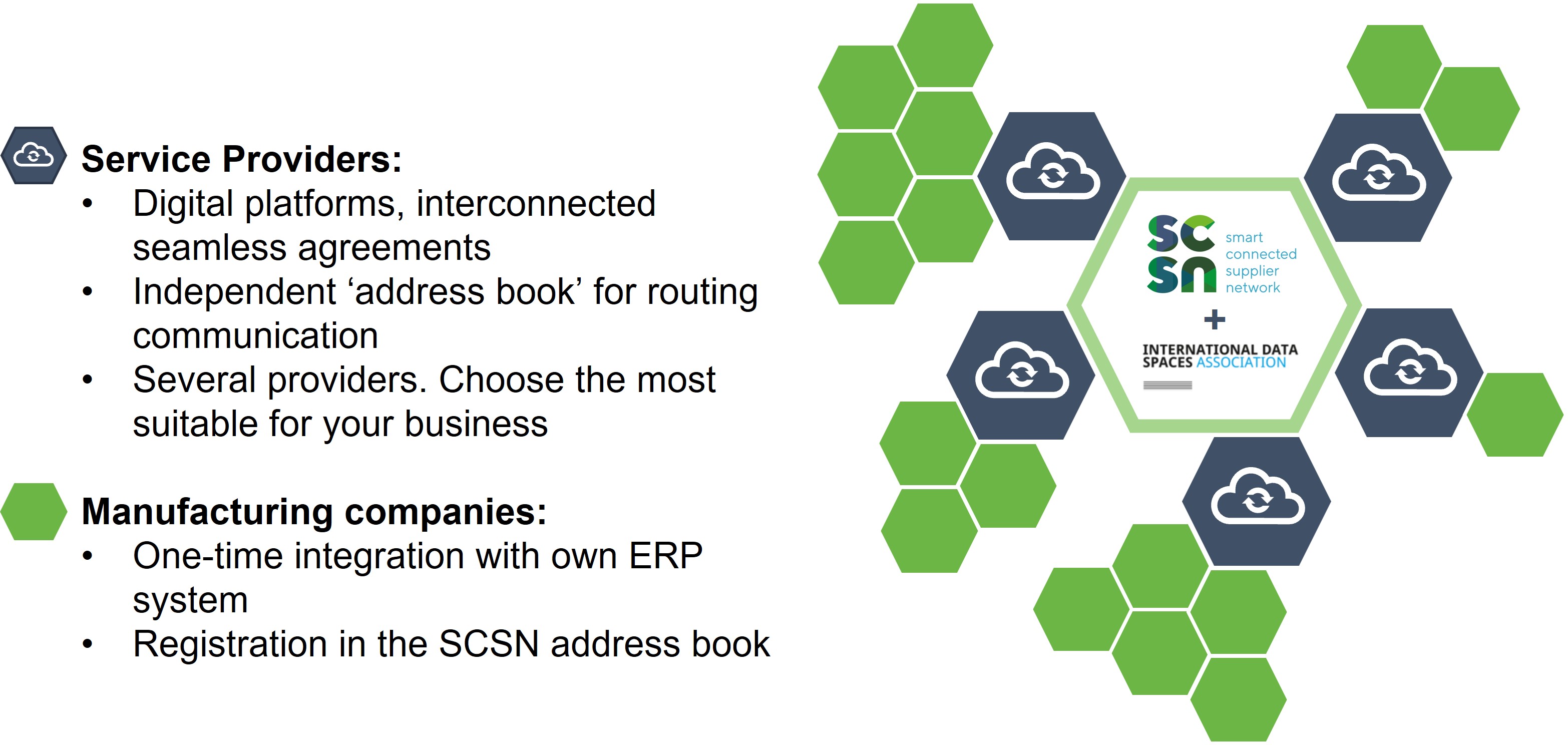SCSN is an open initiative that makes maximum use of and is consistent with existing industry standards. SCSN consists of two solutions: a message standard that defines which information is shared in which format, and a technical infrastructure that defines how the information can be shared in a secure and controlled way with all SCSN partners.
The message standard is based on the Universal Business Languague van OASIS (UBL), a widely internationally accepted domain language, also known as standard ISO/IEC 19845:2015. UBL is an extremely extensive, complex language and is therefore not directly applicable within a domain. Agreements have been made within SCSN concerning how UBL can be applied within the manufacturing industry. In addition, SCSN connects seamlessly with the European Commission’seInvoicing agreements.
SCSN messages are publicly available via the Semantic Treehouse management environment. There is also a public process manual available on GitBook.
The technical infrastructure is set up according to the four-corner model. In order to understand the four-corner model properly, it is important first to explain its predecessors (the two and three-corner models).
Traditional EDI connections are often set up according to the two-corner model. This means that a tailor-made connection is set up between two parties who wish to do digital business with each other. For each new party that is connected, a new connection must be set up, which is often unique and therefore different from the previous connection. Each new connection costs the same investment to set up and manage. This model is very expensive and not scalable.

An improvement on this model is the cloud platform or broker model, which is set up in accordance with the three-corner model. This involves an intermediary IT party (i.e. a service provider) to which all manufacturing companies can connect. Once a manufacturing company has connected to this service provider, it ensures that a connection can be set up with all connected parties. In this model, only one connection is needed, which significantly reduces maintenance and costs.
However, this model only works in a scenario where there is only one service provider in the market. The reality is quite different, as there are currently dozens of service providers. This means that manufacturing companies still have to set up multiple connections (and thus pay the costs several times over).
Even in a scenario where there is only one service provider, this model has its limitations. In this scenario, the service provider gains insights into business-sensitive data such as the order transactions of an entire industry, which can be a major business risk. Furthermore, an entire industry is dependent on one IT party and thus a monopoly on data exchange is created. This problem has already become clearly visible in the B2C sector (for example: taxis, large web (retailers) and meal delivery companies) and has had major consequences for that sector. The lesson is that data sovereignty (i.e. the ability to control one’s own data) is essential.
SCSN is structured according to the four-corner model; see also the image below. The SCSN network is a network of networks in which all service providers/brokers are connected to each other. This enables every manufacturing company to communicate with all other manufacturing companies in the SCSN network, irrespective of the service providers to which the manufacturing companies are affiliated. This is made possible by strict technical and commercial agreements between the service providers, which are managed by the independent SCSN Foundation.
This network is comparable to the telecom sector. Everyone is free to choose a telecom provider (i.e. a service provider in this example) that suits them best. The customers of these telecom providers can call all other connected people (i.e. manufacturing companies in this example), regardless of which telecom provider they are connected to or which type of mobile phone they have (i.e. IT system in this example).

The technology under the four-corner model within SCSN is International Data Spaces (IDS), also known as the international DIN-SPEC 27070 ‘Requirements and reference architecture of a security gateway for the exchange of industry data and services’ standard. IDS makes it possible to share data in a secure way, without losing control over it. Since data is becoming an increasingly important asset for companies, it is essential to share data in a controlled way.
SCSN has established its own data space and governance, which is compatible with the other IDS-based initiatives. As a result, SCSN fits in seamlessly with dozens of other initiatives.